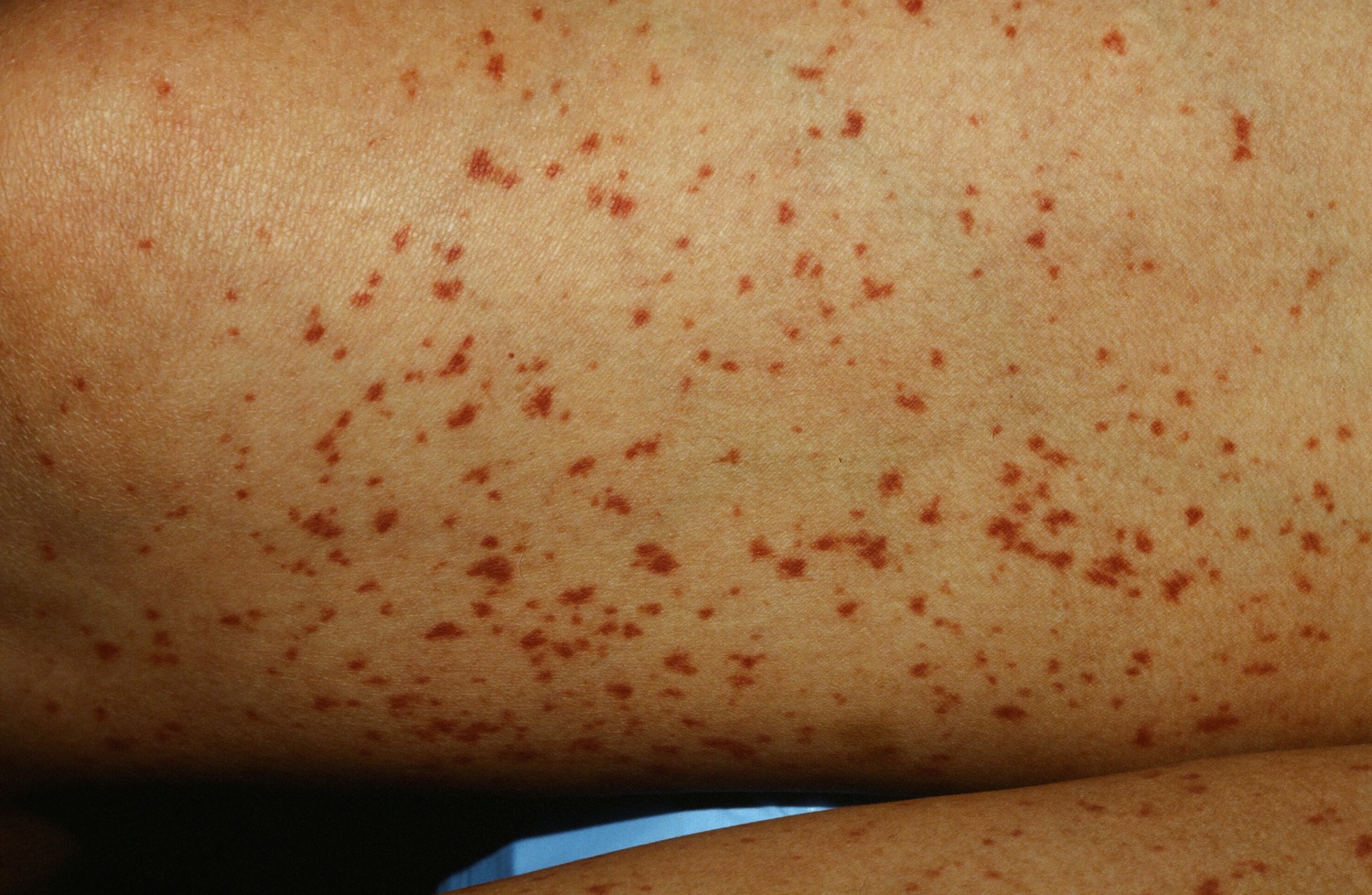

Malnutrition, such as deficiencies of vitamins B12, C, or K, or folate. Inflammation of a blood vessel (vasculitis). Examples include: Chronic inflammatory diseases, such as lupus.Liver disease, such as cirrhosis.Some types of cancer, such as Hodgkin lymphoma, leukemia, or multiple myeloma. Īn infection that causes the buildup of toxin in the blood or tissues (sepsis).Ī bleeding or clotting disorder, such as hemophilia, von Willebrand disease, thrombocytopenia, or another less common bleeding or clotting disorder. This may be caused by:Ī medicine, such as aspirin or blood thinners (anticoagulants). Some people have sudden unexplained bruising or blood spots under the skin, or they may suddenly get bruises more often.
Tiny pinpoint rash skin#
But they are different than the tiny, flat, red spots or birthmarks (hemangiomas) that are on the skin all the time. They are tiny, flat, red or purple spots in the skin. Purpura might look like bruises, but they aren't caused by an injury as most regular bruises are. Report this type of bruising, and seek help to prevent further abuse.īlood spots under the skin may be either purpura or petechiae.

It's important to consider this possibility, especially if the bruises can't be explained or if the explanations change or don't match the injury. And it doesn't cause blood clots.īruises that don't seem to be caused by an accidental injury may be caused by abuse. It's not the same thing as a blood clot in a vein. A hematoma usually isn't a cause for concern. This gives the skin a spongy, rubbery, lumpy feel. In some cases after an injury, blood collects and pools under the skin (hematoma). Women bruise more easily than men, especially from minor injuries on the thighs, buttocks, and upper arms.Ī tendency to bruise easily sometimes runs in families. When blood vessels break, bruising occurs. These changes, along with skin damage from exposure to the sun, cause blood vessels to break easily. The cushioning effect of the skin decreases as the fat under the skin decreases. As a person ages, the skin becomes less flexible and thinner because there is less fat under the skin. Bruises are most common in injuries to the forearms, hands, legs, and feet. Older adults often bruise easily from minor injuries. Bruising easily doesn't mean you have a serious health problem, especially if bruising is minimal or only shows up once in a while. If you bruise easily, you may not even remember what caused a bruise. But severe bruising, swelling, and pain that start within 30 minutes of an injury may mean a more serious problem, such as a severe sprain or fracture. Home treatment may speed healing and relieve the swelling and soreness from bruises that are caused by injury. A bruise on a leg usually will take longer to heal than a bruise on the face or arms. Sometimes the area of the bruise spreads down the body in the direction of gravity. As bruises (contusions) heal, they often turn colors, including purplish black, reddish blue, or yellowish green. Blood leaks into tissues under the skin and causes the black-and-blue color. Terms of use.Health Library Skip Navigation Top of the pageCheck Your SymptomsBruises and Blood Spots Under the Skin Overviewīruises form when small blood vessels under the skin tear or rupture, most often from a bump or fall. © 1998-2023 Mayo Foundation for Medical Education and Research (MFMER).

See a member of your health care team soon if you develop petechiae all over the body, or you can't identify the cause of the petechiae. Some of the causes of tiny round spots on the skin, called petechiae, can be potentially serious. Petechiae may be caused by other medical conditions. Examples of these types of infection include: Petechiae may be caused by infection with a fungus, virus or bacteria. Petechiae may result from taking some types of medicine, including phenytoin (Cerebyx, Dilantin-125, others), penicillin and quinine (Qualaquin). Tiny spots on the face, neck and chest can be caused by straining for a long time from coughing, vomiting, giving birth or lifting weights. Petechiae form when capillaries bleed, leaking blood into the skin. Tiny blood vessels, called capillaries, link the smallest parts of your arteries to the smallest parts of your veins. Petechiae are common and can be caused by many different conditions. Sometimes they appear on the inner surfaces of the mouth or the eyelids. The spots are often flat to the touch and don't lose color when you press on them. The spots often form in groups and may look like a rash. They're caused by bleeding, which makes the spots look red, brown or purple. Petechiae (puh-TEE-kee-ee) are pinpoint, round spots that form on the skin.


 0 kommentar(er)
0 kommentar(er)
